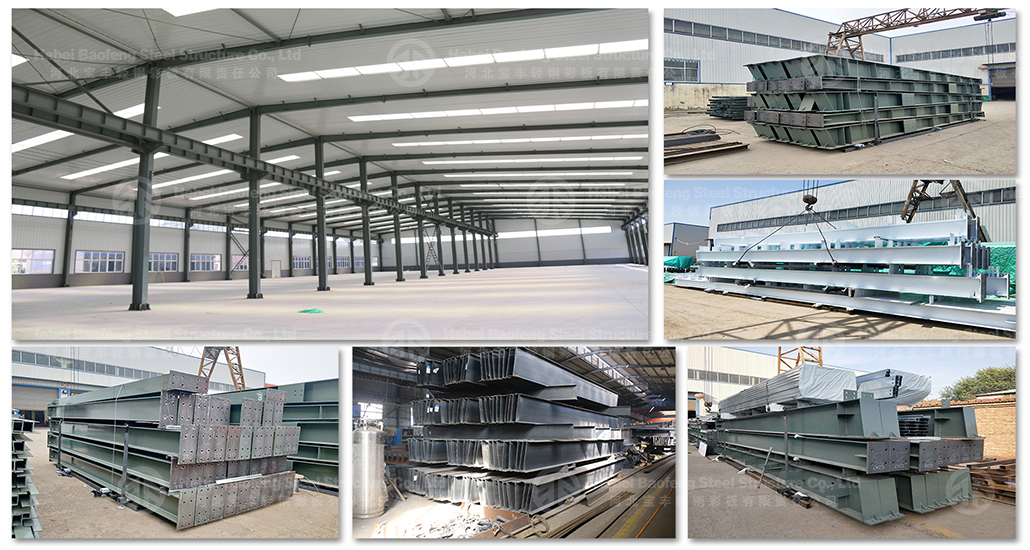
The Benefits of Using Steel for Storage Shed Construction
Using steel for storage shed construction offers numerous advantages over traditional materials like wood or concrete. Its unique properties make it an ideal choice for durable, cost-effective, and versatile storage solutions. Below are the key benefits:
1. Exceptional Durability & Longevity
Resistance to Environmental Factors: Steel is impervious to rot, pests (termites, ants), and mold, unlike wood. It withstands extreme weather conditions (heavy rain, snow, high winds, and UV exposure) without warping, cracking, or degrading.
Fire Resistance: Steel is non-combustible, significantly reducing fire risks—a critical advantage for storing flammable materials or in fire-prone areas.
Long Lifespan: With proper maintenance, steel sheds can last 50+ years, far outperforming wood (20–30 years) or concrete (prone to cracking over time).
2. Cost-Effectiveness
Lower Initial Costs: Steel components are prefabricated in factories, reducing on-site labor and material waste. This mass-production efficiency lowers upfront construction costs compared to custom-built wood or concrete sheds.
Minimal Maintenance Expenses: Steel requires no painting (unless coated for aesthetics), pest control, or repairs from rot/warping, saving 10–30% in long-term maintenance costs versus wood.
Insurance Benefits: Many insurers offer lower premiums for steel structures due to their fire resistance and durability, further reducing operational costs.
3. Fast & Efficient Construction
Prefabricated Components: Steel sheds are pre-engineered and cut to precise specifications in factories, minimizing on-site construction time. Assembly typically takes days to weeks, compared to months for traditional builds.
Reduced Labor Needs: Fewer workers and specialized tools are required, simplifying logistics and speeding up project timelines. This is especially valuable for remote or time-sensitive projects.
4. Design Flexibility & Customization
Modular & Scalable: Steel’s strength allows for large, open interiors without internal support columns, enabling customizable layouts for vehicles, equipment, or inventory.
Adaptable Sizes & Shapes: Steel can be easily shaped into curves, angles, or multi-story designs to meet specific storage needs (e.g., high-clearance sheds for tall machinery).
Aesthetic Options: Powder-coated finishes in various colors and textures allow steel sheds to blend with surroundings or meet branding requirements (e.g., corporate storage facilities).
5. Sustainability & Environmental Benefits
100% Recyclable: Steel is the most recycled material globally, with over 90% of structural steel reused in new projects. This reduces landfill waste and supports circular economy principles.
Energy Efficiency: Steel sheds can be insulated to meet energy codes, reducing heating/cooling costs for temperature-sensitive storage (e.g., food, pharmaceuticals).
Low Carbon Footprint: Prefabrication minimizes on-site waste, and steel’s durability means fewer replacements over time, lowering lifetime environmental impact.
6. Strength & Structural Integrity
High Load-Bearing Capacity: Steel’s tensile strength supports heavy loads (e.g., vehicles, industrial equipment) without sagging or deformation, even in large-span designs.
Wind & Seismic Resistance: Engineered steel frames meet stringent building codes for wind uplift (up to 150+ mph) and seismic activity, ensuring safety in extreme conditions.
Dimensional Stability: Unlike wood, steel doesn’t expand/contract with humidity, maintaining structural integrity and preventing gaps or leaks.
7. Low Maintenance Requirements
No Pest Control: Immune to termites, rodents, and fungi, eliminating the need for chemical treatments or repairs from biological damage.
No Rot or Warping: Steel remains stable in wet/dry conditions, avoiding the maintenance headaches of wood (e.g., sanding, sealing).
Easy Repairs: Damaged sections can be replaced quickly with prefabricated parts, minimizing downtime.
8. Versatility in Applications
Steel sheds are used across industries for:
Agricultural Storage: Grain silos, equipment shelters, livestock housing.
Commercial/Industrial: Warehouse extensions, tool storage, vehicle garages.
Residential: Garden sheds, workshops, RV/carports.
Logistics & E-commerce: Fulfillment centers, cold storage facilities.
9. Enhanced Safety
Non-Toxic: Steel doesn’t emit volatile organic compounds (VOCs) or harmful chemicals, ensuring a safe environment for stored goods and workers.
Secure: Steel’s strength deters break-ins and resists forced entry better than wood or lightweight materials.
10. Compliance with Building Codes
Steel structures are engineered to meet or exceed international building standards (e.g., IBC, Eurocode, AS/NZS), ensuring safety, durability, and legal compliance for permits and inspections.
Conclusion
Steel storage sheds combine strength, affordability, and sustainability into a low-maintenance, long-lasting solution. Whether for agricultural, commercial, or residential use, steel’s versatility and resilience make it the superior choice over traditional materials. By investing in a steel shed, you gain a future-proof asset that minimizes costs, maximizes space, and adapts to evolving storage needs.

Mga kategorya
pinakabagong blog
Mga tag
© Copyright: 2025 Hebei Baofeng Steel Structure CO.,LTD Lahat ng Karapatan ay Nakalaan.

IPv6 suportado ng network